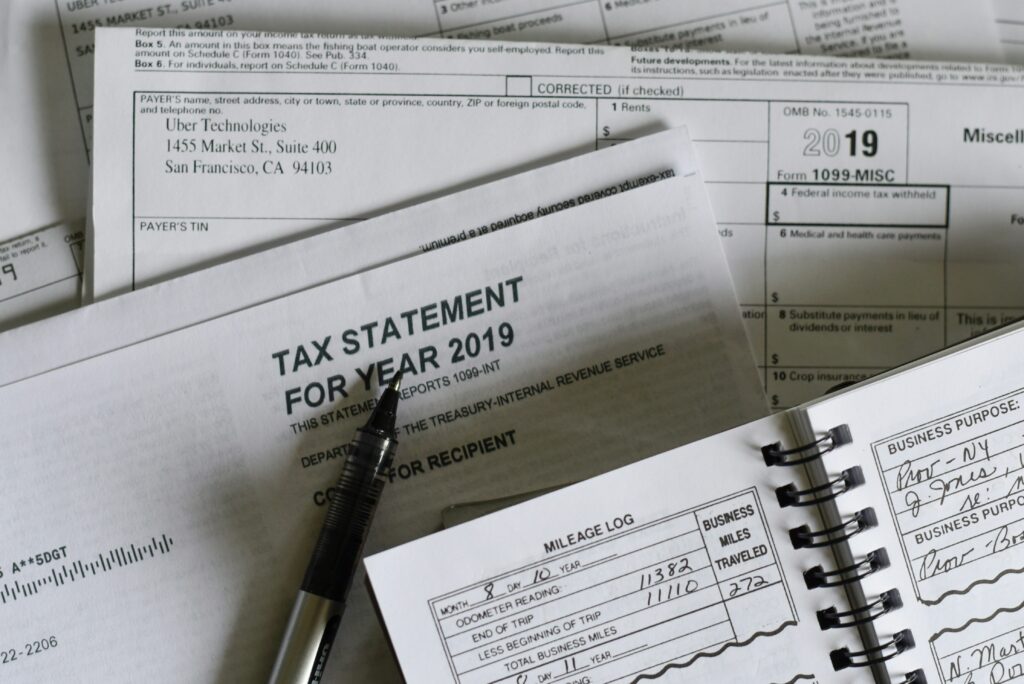The tenth most competitive economy in the world is Denmark, officially the Kingdom of Denmark. There are 443 identified islands and the Jutland peninsula in this Northern European nation. Greenland, the world’s largest island, and the Faroe Islands in the North Atlantic Ocean are both Danish overseas territories. Denmark’s robust welfare programs underpin the high quality of life enjoyed by its citizens.

Denmark’s income taxes for expats
To optimize your finances as an expat in Denmark, you must understand not only the progressive earnings levy rates but also navigate a complex system of deductions and credits.
Rates of income tax
In Denmark, an ascending scale of income tax rates prevails, encompassing approximately 8% for individuals with modest incomes to as high as 55.89% for those in higher income brackets. Expatriates should acquaint themselves with these levy bands and their implications relative to various earnings levels.
Tax credits and deductions
Danish expats may be qualified for some tax credits and deductions, including the standard deduction, child care expenses, and housing costs. When living and working in Denmark, expats can minimize their levy obligations by being aware of these opportunities.
Denmark’s income tax obligation
Danish taxation is applied to the worldwide income of Danes. Income from Danish sources is taxable for nonresidents. In general, a person is considered a resident if they live there permanently or stay for longer than six months. In Denmark’s levy landscape, income streams come in two distinct forms: personal income and net capital income. Consequently, taxable earnings are the aggregate of these two, coupled with any eligible deductions that might apply. Employed abroad by a Danish resident employer, expats are subject to a specific levy regime. For one or more periods up to a maximum of 84 months, salary income is subject to taxation at a flat rate of 32.84%, including the 8% labor market levy. The expatriate is subject to an ordinary income levy after 84 months. Earnings under the special regime, other than salaries, are subject to taxation at the standard progressive levy rates.
Danish tax year and rules
The calendar year serves as the Danish tax year. Each taxpayer must file an advance income assessment before the start of each levy year. Advance levy payments are made by withholdings (deductions) from job income. Let’s say net capital gains or self-employment income reach a specific amount. Then, depending on the advance assessment, the government will collect prepayments from the person in ten installments during the tax year. Taxpayers must submit their levy returns by July 1st of the year after the tax year in question. When the final tax assessment notification is published, the Danish levy authorities reimburse any overpaid tax. The remaining levy is divided into three payments September, October, and November. Any unpaid levies, interest, and penalties up to a specific amount are carried forward to the following year. Separate levy returns must be filed by married individuals. Taxpayers are allowed to divide up some deductions between their spouses when calculating their taxes. To avoid paying interest on unpaid taxes, taxpayers may make voluntary levy payments throughout the fiscal year and up to July 1 of the next fiscal year.
Danish tax reduction
Tax benefits, including personal and spousal deductions, are exclusively available to taxpayers classified as ‘residents’. The special expatriate tax regime extends exemption from this rule. As a rule, non-residents find themselves governed by identical tax rates as residents within Denmark. All pay income is subject to an 8% labor market levy that is required. After accounting for the labor market, earnings levies are computed.
Withholding of expat tax
Ordinarily, shareholders must pay a statutory withholding of 27% on dividend income. Those who qualify for a lower levy rate via a levy agreement or another law may apply to the Danish tax authorities for a refund of statutory withholding. The employee contributes DKK284 per month through payroll withholding to the Danish Supplementary Pension Scheme (ATP) for 2019. The type of business and other factors will affect the annual cost of insurance. The equivalent salary for a white-collar worker in 2019 might be around DKK15,000. Denmark and the United States have signed a totalization agreement to alleviate the burden of paying into two different social security systems and ensure benefit coverage. Denmark’s tax treaties, known as Double Taxation Avoidance Agreements (DTAs), aim to prevent dual taxation of income for eligible individuals by both Denmark and their home country. For optimal use of treaty benefits, expats should have their US and Denmark income reviewed by an international tax expert like Tax Samaritan.
You may also find these articles helpful
Reasons to immigrate to Denmark
